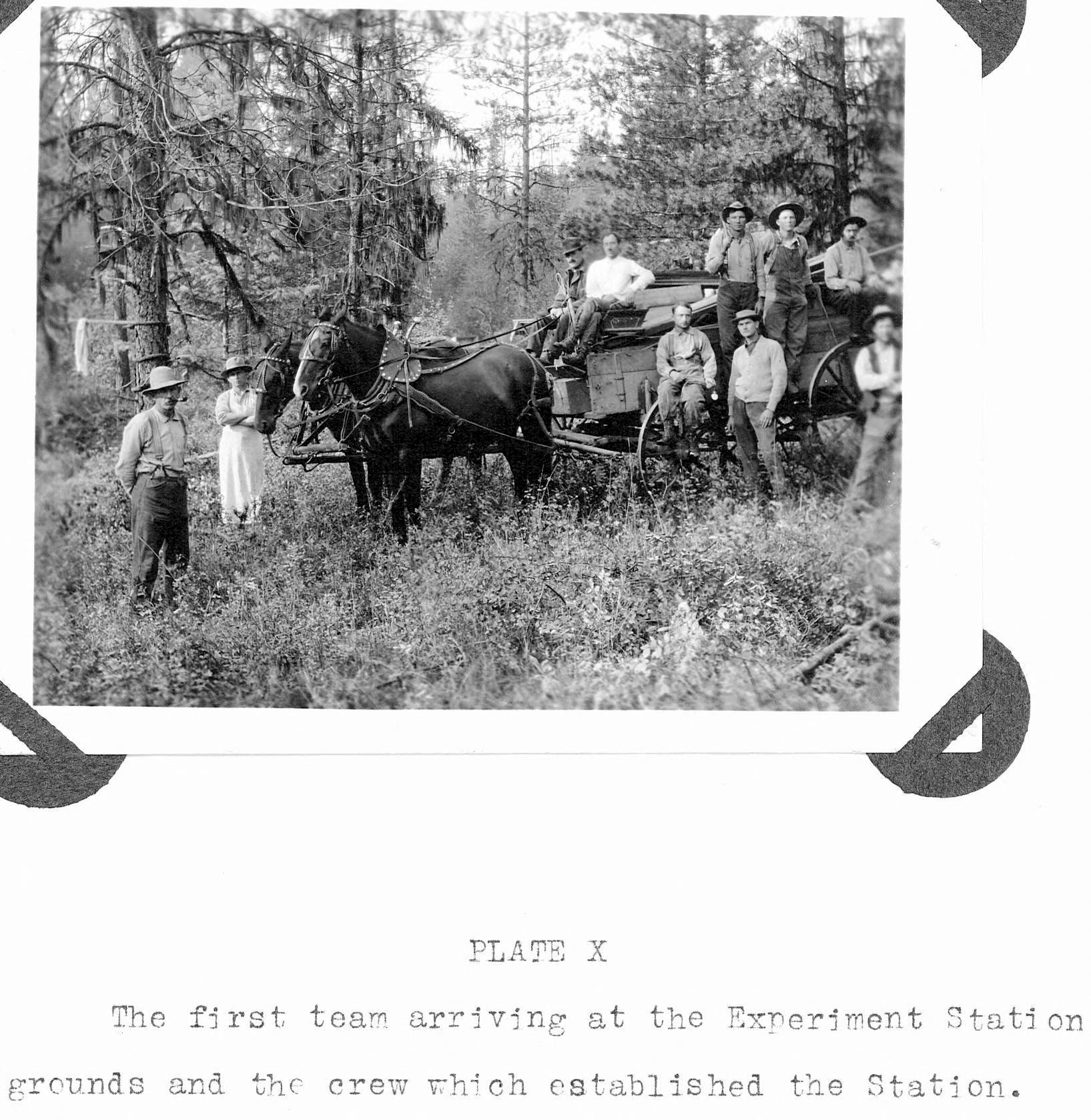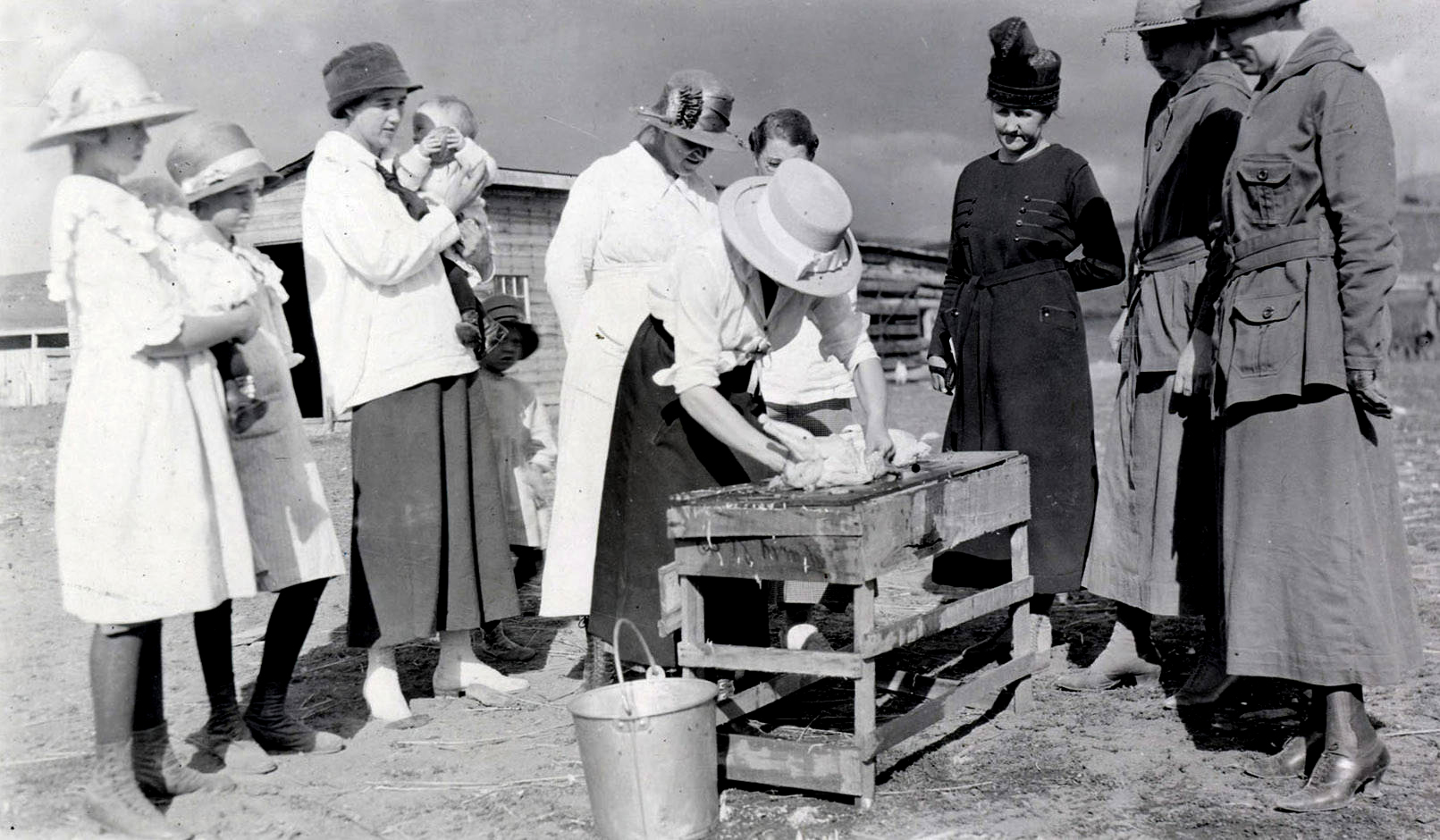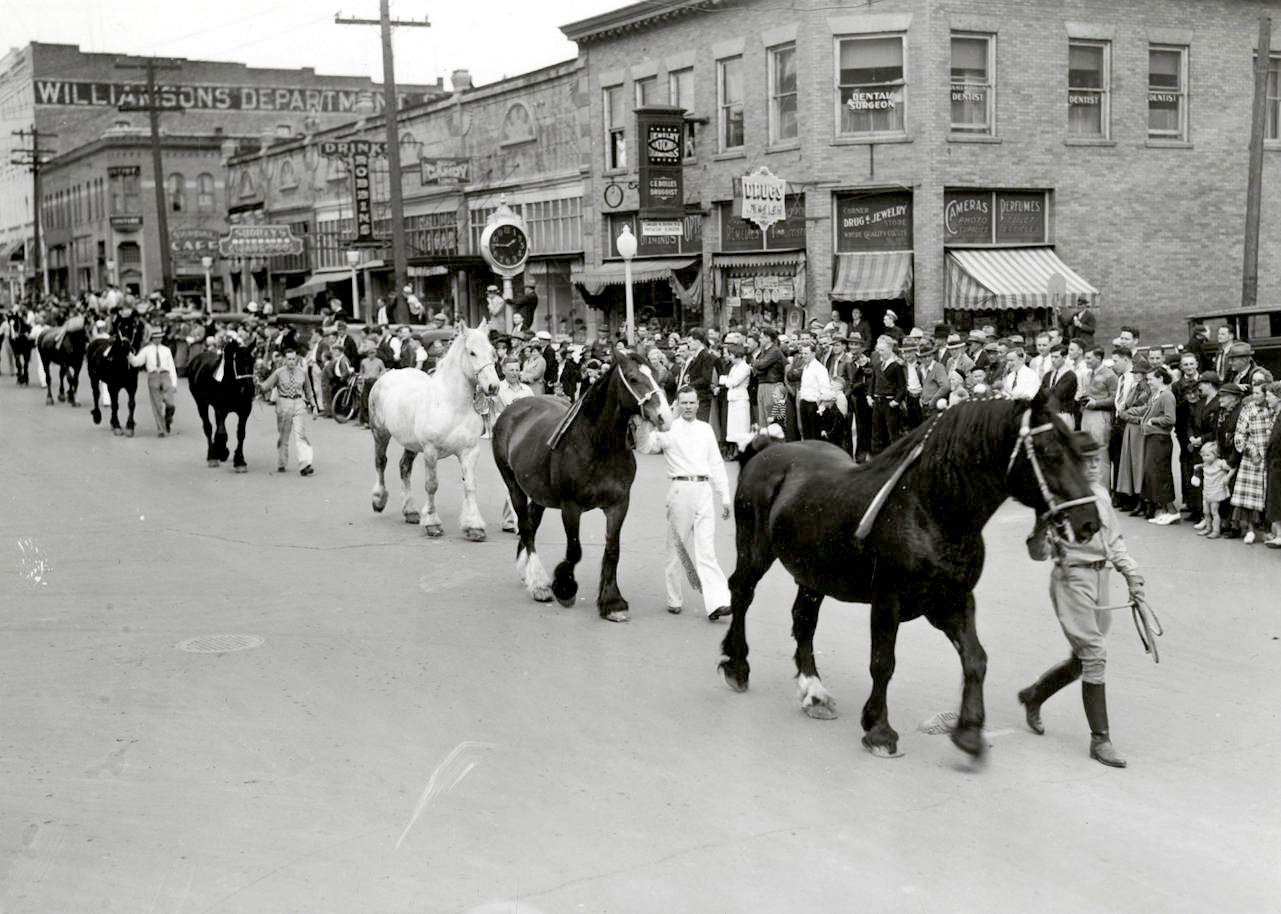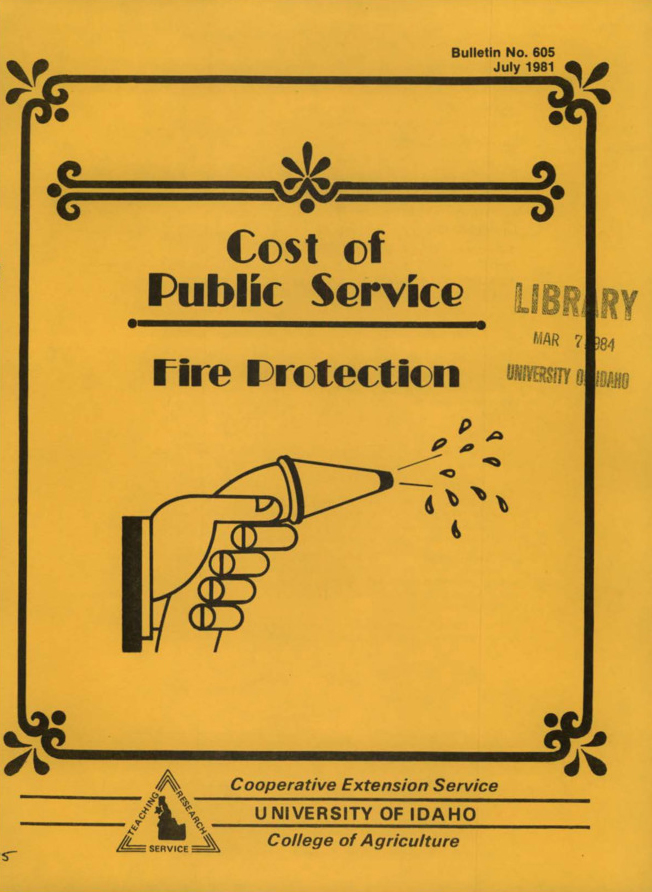Historical Overview
Contents: Experiment Stations | Extension Program | 1920-1950 | 1950-2000
Experiment Stations
While the 1862 Morrill Act led to University of Idaho’s creation as a land grant institution, the Hatch Act of 1887 led directly to U of I’s College of Agriculture, providing funding for agricultural research and requiring land-grant universities to establish experiment stations.

The first wave of these stations were created in 1892 in Moscow, Grangeville, Idaho Falls, and Nampa. The purpose of these facilities were to solve immediate farming problems with practical research and conduct long-term scientific investigations of agriculture under USDA oversight.
✺
Extension Program
In 1907, the USDA encouraged land-grant colleges to establish extension programs, which U of I launched in 1910 in southern Idaho. The two person office in Boise engaged in activities including hosting satellite schools, giving demonstrations, organizing agricultural fairs and providing personal assistance to farmers.

Early extension leaders like F.D. Farrell and Edward J. Iddings established a statewide program that focused on three key needs for farmers: economic knowledge, pest and disease control and promoting partnerships with U of I researchers to ultimately improve crops and livestock. These efforts were bolstered by the Smith-Lever Act of 1914 which promoted cooperative state-federal education programs and the “Food Will Win the War Campaign” of WWI, which increased funding for Extension programs.
✺
1920-1950
In the 1920s, the UI purchased a 240-acre tract of land east of the original college farm for maintaining high-quality livestock, including cattle, sheep, horses, hogs, and poultry which won major awards at national livestock expositions. A lot of the college’s development and branding in this period was focused around animal husbandry, livestock operations and organizing events like the Little International Livestock Show in 1923 as a community needs oriented competition that would highlight agricultural research and form partnerships with farmers.

By 1950 97.6% of Idaho farms had electricity compared to 78% nationwide and CALS was using this resource to develop the mechanization of dairy farms and poultry producers, creating automatic feeders, waterers, ventilation systems, and solar-heated windows for increased egg production.
✺
1950-2000
Moving forward, CALS focused on the popularization of sprinkler irrigation systems as well as thinning systems and monogerm beet seeds to boost the sugar beet farming, combine harvesters and conveyor systems for improved potato farming and developing hillside grain combines developed for North Idaho’s sloping terrain.

A particular focus for the last thirty years of the college has been in the development of fertilizers, herbicides, and insecticides, including DDT as well as the development of antibiotics to boost livestock productivity and a major focus in the last twenty years around climate change fire ecology. To reflect this expanded scope, the College of Agriculture changed its name to the College of Agriculture and Life Science or CALS in 2001.
✺